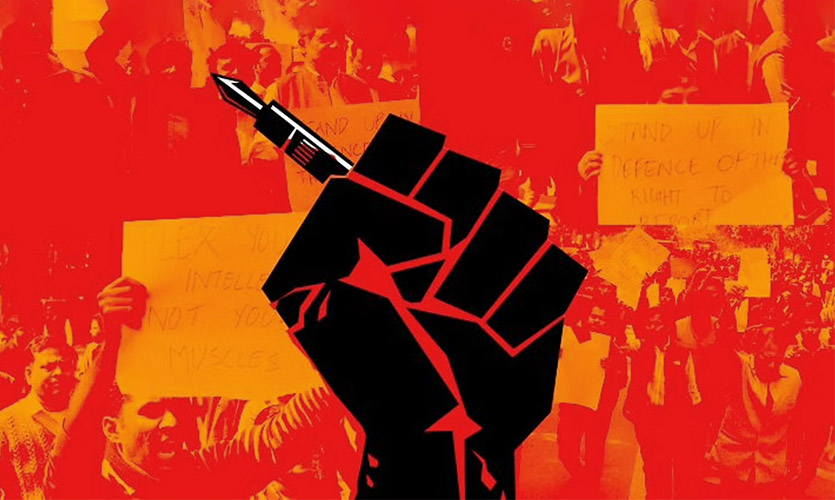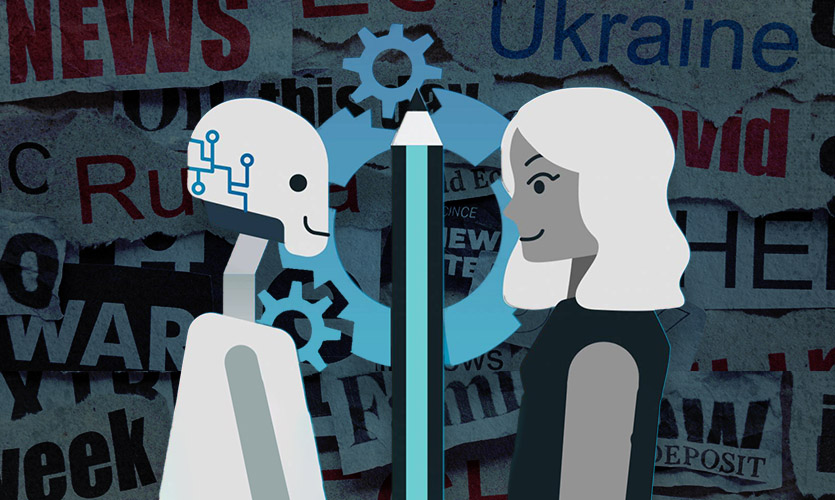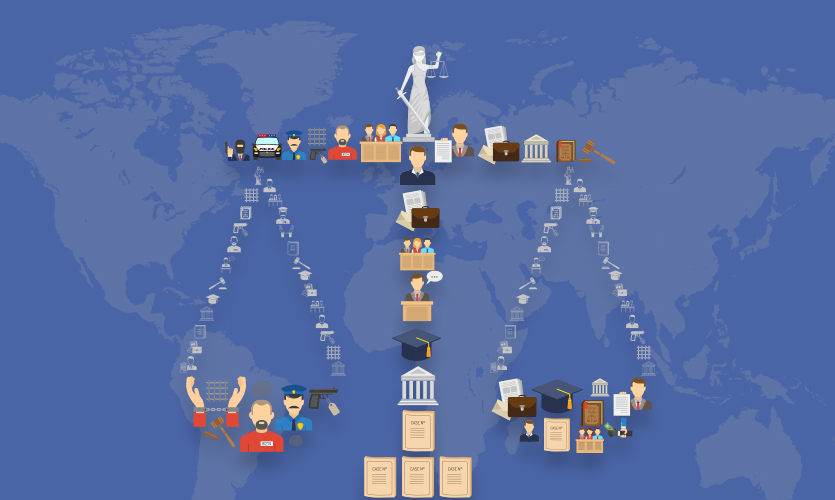Lately, what we know about the freedom of the press in India has become very limited to protests and deleted posts across social media. While fingers are usually pointed towards the political leadership and the ownership of media agencies, there is very little that we know about the technicalities at hand.
A provoked mob is more than willing to jump on the bandwagon by just scratching the surface of Indian media today. People turn a blind eye to data, reports and thousands of scandals with ease. When it comes to journalism, there is no black and white, and it’s high time that we swallow this bitter pill with a sip of reasoning.
It is inherently ironic when people claim ‘Indian press is not free’, while plainly expressing their opinions and dissatisfaction with the government on social media in the same breath. Such is the case of Rana Ayyub, a global opinion writer and journalist, who has time and again raised her pen to criticise the government for restricting press freedom. While advocating for minority rights she has often misled the narrative towards the lack of a free press. Lest we forget state-sponsored media is different from communal violence that stems from the diversity of India exploited by the colonialists.
At the International Journalism Festival in Italy, Ayyub made misleading statements and peddled misconceptions about several internal matters such as the Citizenship Amendment Act (CAA) and COVID relief funds.
“As I sit here some of India’s brightest students and activists are behind bars because they protested against the citizenship act that the Indian government under Narendra Modi has brought into effect that discriminates between Muslims and Hindus as citizens of India,” she claimed.
In reality, the CAA does not take away the citizenship of Indian Muslims. All it does is speed up the citizenship status of persecuted religious minorities from the neighbouring Muslim majority countries of Pakistan, Afghanistan and Bangladesh.
It seems that people throwing around blame regarding the sensationalism of news and slanted facts are usually the ones forwarding the half-baked piece of information, with little to no verified proof to back it.
Before we get too comfortable on our couches and angrily tweet about the lack of free press, let’s take a moment to rethink where we get our information from, and how much of it is close to reality.
With overflowing views and ‘who said what’ on social media, it has become increasingly difficult to distinguish facts from opinions. The 280 characters on Twitter can tell you only so much, but are enough to trigger a reaction. Twitter, which has over 75 million users in India through its mobile application, has emerged as the single most significant online space for those looking to share their views on this issue.
The Indian government has raised concerns with Twitter regarding the increase in misleading and threatening comments on certain issues, during the protest against new farm laws, which could damage the fabric of social order. Following this, the social media platform suspended the handles of numerous high-profile accounts, including that of The Caravan, during its brief time of compliance with the injunction. A Twitter spokesperson stated that hashtags that were merely supporting farmers or their protests were not restricted. People shared their interpretation of the incident and outrage followed.
Some see this as curbing freedom of speech and for some, it is a measure to monitor propaganda and violence.
Placing the Indian press under scrutiny, one parameter to be considered can be the World Press Freedom Index. But what happens when that in itself is flawed?
There Is More to The Indian Press Than Internet Shutdowns In Kashmir
If one were to turn to Google to know more about the report by the Paris-based Reporters Without Borders (RSF), one is faced with just the fact that India’s rank dipped. The analysis and the factors taken into account may or may not catch your eye.
India was ranked 140 in 2019, but dropped to 142 the following year. India further dropped to 150 earlier this year.
In its independent examination of India’s media domain, the language reflects, at best, the carelessness and inability to recognise India’s complexity, and, at worst, bias. It appears to be based on speculation rather than statistics.
The report reads, “Supporters of Hindutva, the ideology that spawned the Hindu far right, wage all-out online attacks on any views that conflict with their thinking. Terrifying coordinated campaigns of hatred and calls for murder are conducted on social media, campaigns that are often even more violent when they target women journalists, whose personal data may be posted online as an additional incitement to violence. The situation is also still very worrisome in Kashmir, where reporters are often harassed by police and paramilitaries, with some being subjected to so-called “provisional” detention for several years.”
In a written reply in the Lok Sabha, the Union Information and Broadcasting Minister Anurag Thakur said, “The government does not subscribe to its (RSF’s) views and country rankings… for various reasons, including very low sample size, little or no weightage to fundamentals of democracy, adoption of a methodology which is questionable and non-transparent, etc.”
While the aim may be aspirational, the approach is subjective, and could build legitimacy if the category-wise results and list of responders were provided.
Following India’s decision to repeal Article 370 and divide Jammu and Kashmir into two Union Territories, liberal fury has found a new cause in the conflicted borders of Kashmir.
External Affairs Minister Dr S Jaishankar blamed politics for the misinterpretation of the issue. He said, “What was a temporary provision of the constitution was finally put to rest. This was supposed to be an act of majoritarianism. Now tell me what was happening in Kashmir, was it not majoritarianism? I think the way facts are slanted.. What is right and wrong is debated. This is actually politics at work.”
He simultaneously slammed those who have criticised the snapping of internet services in law and order situations. “The big song and dance about the internet being cut… if you’ve reached a stage where you say that an internet cut is more dangerous than the loss of human lives, then what can I say?” he questioned.
Keeping only this issue in mind means having a tunnel vision for the media across the country.
“Bad Journalism Makes A Lot More Noise”
Indian Express Editor-in-Chief Raj Kamal Jha’s address at the Ramnath Goenka Excellence in Journalism Awards organised resonates with how people perceive journalism in India today.
“This year for (the) Ramnath Goenka Award, we got 562 applications. This is the highest ever and this is very important to me to underline this number because this is the reply to those who say that good journalism is dying, that journalists have been bought over by the government.
Good journalism is not dying; it is getting better and bigger. It’s just (that) bad journalism makes a lot more noise than it used to do five years ago,” he said.
Undoubtedly, the ethics of the press in the global arena have taken a hit with conflicting relations within the countries and with others. However, India has maintained a consistent streak to try to provide its journalists with a platform to voice their dissent. India still grapples with accommodating culturally diverse issues which have impacted media on some level. Not only that, but media agencies supporting political parties have further enforced one-sided perspectives. It is now up to the people how they consume news and where they put their trust.
The issue is not whether freedom of the press exists, but rather which bias dominates it. That’s where we get it wrong.
Read more: Ranveer’s Photoshoot Is Not Corrupted, Modern Indian Society Is










